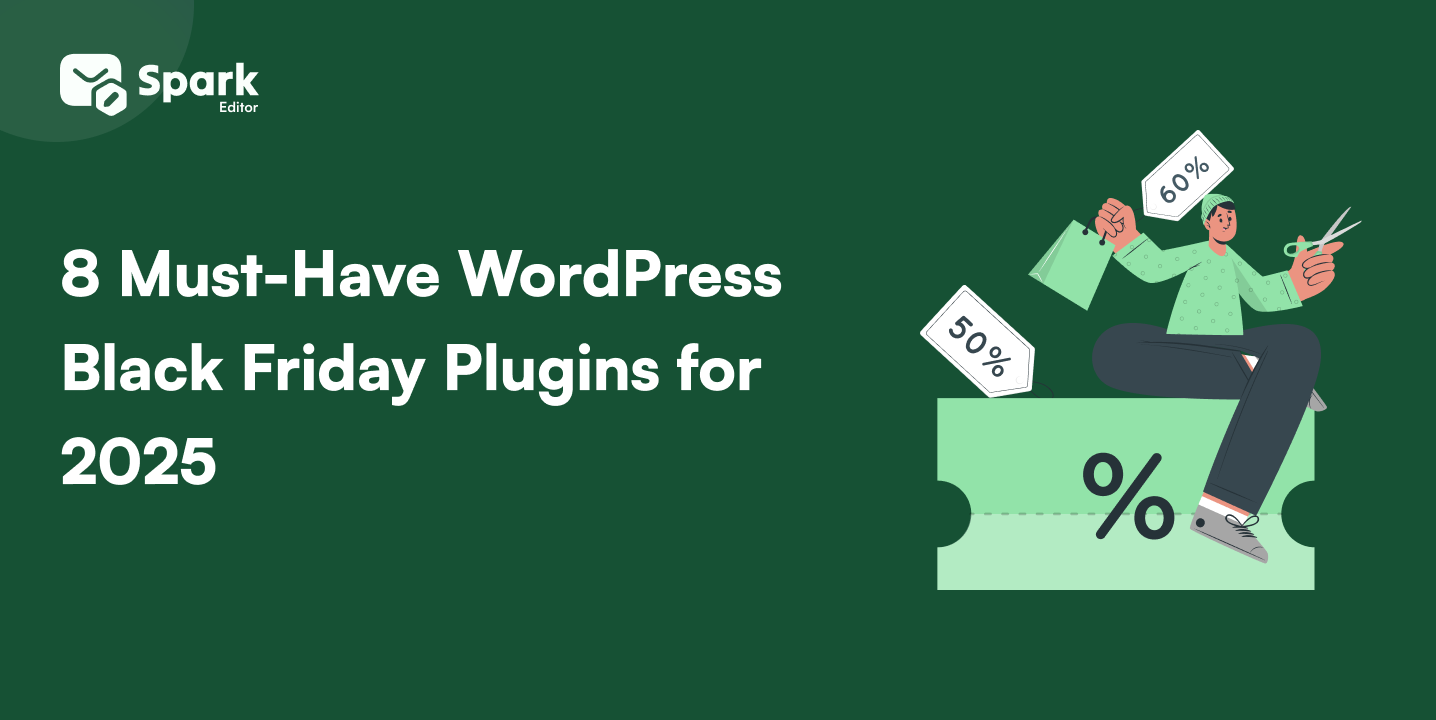Email marketing is a game-saver for WooCommerce store owners, providing a direct means to communicate with customers, promote products, and generate revenue. GDPR-Compliant Email Consent in WooCommerce is essential for store owners who want to run effective email marketing campaigns while staying on the right side of data privacy laws.
But then, ever since the General Data Protection Regulation (GDPR) came into effect, store owners are required to deal with consumer data responsibly—particularly email consent. Failure to do so can result in large fines and lost customer trust, which makes it all the more important to get it right.
According to GDPR email consent regulations, WooCommerce shops should only get explicit, informed, and voluntary consent before sending marketing emails. This also requires store owners to use clear, user-friendly mechanisms to secure consent that values customer privacy and preference.
By the end of this guide, you’ll have a clear, actionable plan to make your WooCommerce store not just GDPR-compliant but also maximize email marketing efforts for improved engagement and conversions.
Send automated order follow-up emails using Retainful’s easy-to-setup email automation.
What is GDPR?
The General Data Protection Regulation (GDPR) is a European Union regulation that oversees how companies gather, process, and store user information. Implemented in 2018, GDPR seeks to safeguard the privacy and personal data of EU citizens by imposing rigorous data protection policies, particularly for email marketing and email consent.
Key Principles of GDPR
GDPR is built upon several key principles that businesses, including WooCommerce store owners, must follow:
- Lawfulness, Fairness, and Transparency—Data must be collected and processed legally and transparently, especially in email marketing compliance with WooCommerce.
- Purpose Limitation – Data should only be collected for a specific, explicit, and legitimate purpose, such as email marketing consent in WooCommerce.
- Data Minimization—Only the necessary amount of data should be gathered and stored for email communications, ensuring privacy-focused email marketing strategies.
- Accuracy—Businesses must ensure that the personal data they hold, including email addresses, is accurate and up-to-date to comply with GDPR email consent best practices.
- Storage Limitation—Personal data, including email contact information, should not be retained longer than necessary under the GDPR compliance checklist for WooCommerce.
- Integrity and Confidentiality—Businesses must protect email lists and customer data against unauthorized access, loss, or destruction using WooCommerce customer data protection measures.
- Accountability—Companies are responsible for demonstrating compliance with GDPR email consent regulations and ensuring that legal requirements for email marketing are met.
To Whom Does GDPR Apply?
GDPR applies to any business that processes the personal data of EU citizens, regardless of where the company is based. This means that if your WooCommerce store collects and processes data from EU customers—whether for purchases, newsletters, or marketing—you must comply with GDPR rules for email subscriptions.
Why is GDPR Compliance Necessary for WooCommerce Stores?
GDPR compliance is vital for WooCommerce stores since a breach of GDPR provisions can attract enormous fines and legal action. Apart from this, compliance provides email marketing compliance in WooCommerce, gains customer confidence, and enhances data protection habits. Some of the important elements include:
- Privacy of user data in WooCommerce
- Protection of legal necessities of email marketing
- Protection of transparency of consent management in WooCommerce emails
To ensure your emails are both compliant and engaging, check out why branded emails matter for customer retention in WooCommerce.
The Role of Email Consent in GDPR Compliance
Email consent is one of the most essential elements of GDPR compliance, especially for WooCommerce email marketing. Under GDPR, companies must seek express consent before collecting, storing, or processing any personal information, including email addresses. Below is an overview of how email consent is pivotal in GDPR compliance:
1. Providing Explicit WooCommerce Email Opt-In Best Practices
GDPR requires that consent is freely given, specific, informed, and unambiguous. In the case of WooCommerce email marketing, this implies that store owners should use clear and transparent ways of obtaining email consent. This can be done through :
- Having opt-in checkboxes that are not pre-checked (which is against the law under GDPR).
- Have an easy-to-see explanation of what the customer is consenting to (e.g., newsletters, promotions, product updates).
- Enabling customers to withdraw consent easily at any time.
- The secret to WooCommerce email opt-in best practices is transparency and clarity. Customers need to understand clearly what information is being gathered and how it will be utilized, especially for marketing.
2. Compliance with GDPR Regulations on Email Subscriptions
GDPR puts strict regulations on the way businesses treat email subscriptions. Besides explicit consent, businesses also need to:
- State how customer information, such as email addresses, will be utilized within WooCommerce email marketing campaigns.
- Display a link to the privacy policy for WooCommerce email marketing so customers can see their rights.
- Use double opt-in procedures for email subscriptions, which serve to verify that the customer indeed wants to receive marketing emails. This is an additional step of verification to make sure that consent is provided by the user, avoiding spam and unauthorized emails.
- By making sure these GDPR rules are complied with, companies prevent violations that may result in penalties or loss of customer trust.
3. Managing and Tracking Customer Consent for Marketing Emails
After consent is provided, WooCommerce store owners have to track it. Companies should have records of when and how every customer provided consent. This is necessary for:
- Accountability, as companies have to prove their compliance with GDPR at any moment.
- Ensuring that only GDPR-compliant email marketing tactics are used, like sending related content to customers who have opted in.
- Review and refresh consent records frequently to capture any changes. For instance, when a customer retracts their consent, the business must immediately withdraw them from marketing lists. Maintaining accurate records of customer consent for marketing emails also ensures transparency and GDPR compliance.
4. Facilitating Easy Withdrawal of Consent
Under GDPR, customers should be able to withdraw consent easily at any time. For WooCommerce email marketing, this implies:
- Include an unsubscribe link in all emails so customers can opt out of future communications.
- Giving customers control over their communication preferences through their WooCommerce account settings.
- By making this easy, businesses uphold their legal requirements and do not violate GDPR’s easily accessible withdrawal requirement.
5. Utilizing Consent Management Systems to Monitor Email Consent
To be GDPR compliant, particularly when dealing with multiple subscriptions, WooCommerce email consent management tools or plugins are priceless. These systems assist in the following ways:
- Automating the monitoring of consent
- Offering transparent audit trails
- Updating customer preferences and records of consent with ease
- Through the incorporation of consent management systems into your WooCommerce store, you can make managing email subscriptions an easier process while maintaining continuous compliance with GDPR email subscription laws.
How to Implement GDPR-Compliant Email Consent in WooCommerce
Make sure to keep this list in check to implement GDPR-conformant email consent in WooCommerce.
Including an Opt-in Checkbox on Checkout
To have GDPR-conformant email consent in WooCommerce, shops are advised to include a non-pre-checked opt-in checkbox during checkout for email subscription. This discourages automatic subscription and guarantees informed consent.
A conformant WooCommerce email opt-in form must:
- Contain evident text describing how the user data is going to be utilized
- Does not contain pre-checked boxes
- Provide a link to the WooCommerce email marketing privacy policy
Using Double Opt-in for Better GDPR Compliance
Implementing double opt-in WooCommerce GDPR practices ensures that users confirm their consent before being added to an email list. This helps:
- Verify the authenticity of subscribers
- Reduce spam and fraudulent sign-ups
- Strengthen compliance with GDPR email consent best practices
Plugins for GDPR-Compliant Email Consent in WooCommerce
To simplify GDPR-compliant email consent in WooCommerce, store owners can use plugins such as the GDPR Cookie Consent Plugin, WP GDPR Compliance, and MailOptin for WooCommerce. Plugins are one of the best GDPR-friendly email marketing tools.
To help store owners manage GDPR-compliant email consent. These tools assist in handling cookie notices, adding consent checkboxes, automating compliance, and ensuring proper data collection. Utilizing them can simplify adherence to GDPR while maintaining a seamless user experience.
Features to Look for in a GDPR Compliance Plugin
When selecting a GDPR WooCommerce plugin, consider:
- Automatic WooCommerce email consent settings for GDPR compliance
- Built-in WooCommerce email consent popup
- Easy-to-use tools for GDPR-compliant WooCommerce email marketing automation
Special Mention
WPLegalPages simplifies legal compliance for WordPress site owners, offering a powerful suite of tools to handle privacy laws like GDPR, CCPA, COPPA, DMCA, and CASL effortlessly.
What Makes It Stand Out:
- Instant Legal Pages: Generate privacy policies, terms & conditions, disclaimers, and more with 30+ customizable templates.
- Advanced Cookie Consent: Geo-targeted banners, pre-consent cookie blocking, and saved consent logs ensure full compliance.
- Ecommerce & Affiliate Ready: Built-in templates for Amazon affiliate disclosure, return/refund policies, and shipping terms.
- Auto Cookie Scanner: Detects all cookies on your site instantly—no manual input required.
- Post/Page Lockdown: Force visitors to accept terms before accessing content.
This plugin is ideal for businesses, bloggers, WooCommerce stores, freelancers, and nonprofits wanting a no-hassle, all-in-one legal compliance solution.
WooCommerce Email Consent Best Practices
Some best practices to ensure that your store complies with GDPR for email subscriptions are given below:
1. Offering Clear and Transparent Consent Options
When asking for email consent from customers, it is crucial to present clear and transparent wording regarding what they are consenting to. Users should be aware of:
- Why their information is being gathered (e.g., for email marketing or transactional emails)
- How their information will be utilized (e.g., for product promotions or updates)
- What type of emails they will receive (e.g., newsletters, offers, or sales alerts)
- Clearly state these points in opt-in forms or at checkout to ensure users are fully knowledgeable about their consent. Transparency builds trust and guarantees compliance with GDPR email marketing.
2. Prevention of Pre-Selected Boxes and Deceptive Wording
Pre-checked subscription boxes are banned under GDPR email marketing guidelines. Users are required to positively provide consent by unchecking or manually ticking the opt-in box themselves. In this way, consent is certain and informed.
Steer clear of deceptive language that might mislead customers into thinking they’re consenting to something else. Opt-in should be simple, with no confusion about how their personal information will be used. Honest and transparent language ensures that email marketing consent is provided voluntarily.
3. Applying Double Opt-In for Confirmation
To enhance your GDPR email compliance in WooCommerce, applying a double opt-in process is highly advisable. This entails
- Confirming consent via email after users initially opt-in.
- Giving users a chance to verify their email address and confirm their intention to subscribe to your marketing list.
- Double opt-in enhances email consent management and reduces the chances of invalid sign-ups, ensuring that your customer database remains compliant and up-to-date.
4. Allowing Users to Easily Withdraw Consent
One of the most basic GDPR email consent principles is that users must have the right to withdraw consent at any moment. Make it as simple as possible by adding:
- Unsubscribe links in all emails. This lets customers quickly opt out of receiving future emails with minimal effort.
- Account settings whereby users can control their preferences, e.g., opting in or out of particular types of communication.
- By making withdrawal of consent easy, you follow GDPR guidelines and show respect for your users’ right to data privacy.
5. Record of Consent
As part of your GDPR checklist for WooCommerce, it’s important to record and maintain customer consent records. This involves
- When the consent was obtained and how (e.g., checkbox or opt-in form)
- What the user was informed of at the time (e.g., why the data was being collected)
- Any changes to or revocations of consent
Saving this information means you can produce evidence of GDPR email consent if asked.
6. Keep Your Privacy Policy Accessible
As a part of GDPR compliance, add a link to your privacy policy on your opt-in forms and email marketing communications. Your privacy policy must describe:
- How customer data is used for email marketing
- The rights that customers have to control or delete their data
- Your obligation to data privacy and protection.
7. Regularly Review and Update Consent Practices
Being GDPR compliant is a continuous process. Conduct regular audits of your email consent procedures to verify that they remain compliant with any regulatory changes.
This means double-checking that your opt-in forms remain compliant, your unsubscribe links function properly, and your email marketing practices honor data privacy.
For more tips on crafting high-performing email campaigns, don’t miss our guide on essential WooCommerce email marketing practices to drive growth.
Common Mistakes to Avoid in WooCommerce Email Marketing Compliance
To facilitate GDPR-compliant email marketing on your WooCommerce platform, avoid the following common errors:
Using Pre-Checked Email Opt-ins:
- Subscribing users automatically without clear consent contravenes GDPR.
- Always permit users to voluntarily opt in for themselves, abiding by GDPR email subscription practices.
Not Maintaining a Record of User Consent:
- It’s important to have clear records of when and how consent was received for email marketing.
- Track withdrawals of consent and have an easy method for users to update or withdraw their consent.
Sending Marketing Emails Without Explicit Consent:
- Do not send marketing emails unless you have explicit consent from the user.
- Implement GDPR-friendly WooCommerce email marketing practices to make sure users have opted in before receiving marketing communications.
Turn Default WooCommerce Emails into Masterpieces—Personalize your WooCommerce emails with SparkEditor
Conclusion
Having GDPR-compliant email consent in WooCommerce is a must for keeping your business, as well as your customers’ information, private.
Clear, transparent consent procedures and proper use of credible GDPR email consent plugins help prevent legal complications as well as ensure trust from the audience by WooCommerce store owners.
Auditing and updating your email consent procedure, as well as maintaining proper records at regular intervals, will help WooCommerce email marketing maintain GDPR compliance consistently.
By making these best practices your top priority, you protect not only your store from possible penalties but also your customer relationships by offering a safer and more trustworthy email marketing experience.
Also Read
Frequently Asked Questions
What are the GDPR rules for sending emails? Under GDPR, businesses must obtain explicit, informed, and freely given consent before sending marketing emails. Users should be able to easily opt in and opt out, and businesses must keep records of consent. Additionally, every email must include an unsubscribe option and a clear privacy policy.
How do I make my email GDPR compliant?
To ensure email compliance:
1. Obtain explicit consent – Use opt-in checkboxes (unchecked by default).
2. Use clear language – Explain what users are subscribing to.
3. Enable easy opt-out – Include a visible unsubscribe link in every email.
4. Maintain consent records – Store proof of when and how consent was given.
5. Secure user data – Follow strict security measures to protect email lists.
What are the consequences of non-compliance with GDPR email consent rules? Failing to comply can result in:
1. Hefty fines – Up to €20 million or 4% of annual revenue, whichever is higher.
2. Legal action – Customers can file complaints or lawsuits.
3. Loss of trust – A poor reputation can affect your brand and customer retention.
Does GDPR apply to WooCommerce stores outside the EU? Yes, GDPR applies globally if you collect, store, or process personal data from EU residents. Even if your WooCommerce store is based outside the EU, compliance is necessary if you serve EU customers.
Can I share customer email data with third parties? Only if explicit consent is given. Your privacy policy should clearly state if and how you share data, and users should have the option to opt out. Sharing data without permission violates GDPR and can lead to penalties.





